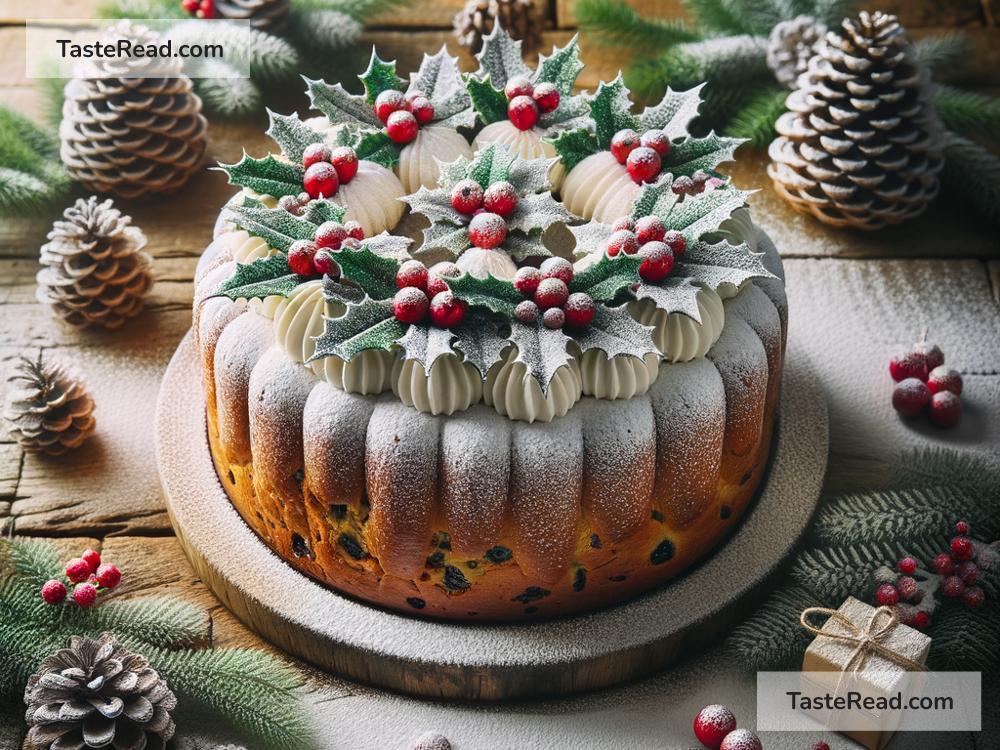The Story of the French Bûche de Noël: A Delicious Holiday Tradition
Every December, families around the world celebrate the holiday season with special food, decorations, and traditions. In France, one of the most beloved Christmas desserts is the Bûche de Noël, which means “Christmas log” in English. This beautifully decorated cake doesn’t just look festive—it also has a fascinating story that ties together history, culture, and culinary art.
What Is a Bûche de Noël?
The Bûche de Noël is a rolled sponge cake, shaped and decorated to look like a wooden log. It consists of a light cake rolled with creamy filling, often flavored with chocolate, coffee, or fruit. Once assembled, the cake is covered in frosting—which may resemble tree bark—and decorated with festive touches like powdered sugar to look like snow, berries, or tiny figurines like mushrooms or Santa Claus. At its core, it’s a delicious dessert for Christmas celebrations. But why does the French holiday dessert look like a log?
The Origins of the Yule Log Tradition
To understand the story of the Bûche de Noël, we need to go back hundreds of years, before desserts like this even existed. In ancient Europe, before the arrival of Christianity, people celebrated winter festivals dedicated to nature and light. One popular custom was the burning of a large log during the longest night of the year, the winter solstice.
The Yule log symbolized the return of the sun as the days slowly became longer after the solstice. People believed the log had magical powers to ward off evil and bring good fortune for the coming year. Families would gather around the fire, and the burning of the log became a time for storytelling, singing, and sharing warmth.
With the spread of Christianity, the Yule log tradition shifted to Christmas, and people continued the practice of burning a log to celebrate the holiday. They even added special touches, like sprinkling the log with wine, honey, or salt for good luck. However, as homes modernized and fireplaces disappeared, the practice of burning large logs became less common.
From Yule Log to Holiday Cake
By the 19th century, French bakers came up with a way to preserve the spirit of the Yule log tradition, even in homes without fireplaces. Instead of burning a real wooden log, they created a cake that looked like one! This edible “Christmas log” made every family able to participate in the tradition—no fire required.
At first, the Bûche de Noël was a simple rolled cake with chocolate frosting to represent bark. But over time, bakers became more creative. They used piping techniques to decorate the cake with realistic textures. They added marzipan figures and included seasonal ingredients like chestnuts, raspberries, and candied fruits. Today, every baker puts their own artistic touch on the dessert, and some Bûche de Noël cakes look so realistic that they truly resemble a piece of wood!
Regional Variations and Modern Flavors
In France, the Bûche de Noël is a holiday staple, and many families enjoy choosing or making their favorite version every year. While the classic chocolate flavor remains popular, there’s no shortage of creative adaptations. Modern versions might include flavors like pistachio, salted caramel, or tropical fruits like passionfruit and mango. Some bakers even swap out traditional sponge cake for frozen mousse versions, creating a chilled dessert that melts in your mouth.
And it’s not just France that loves the Bûche de Noël anymore. Many countries around the world have adopted this festive treat into their holiday menus. In Belgium, Switzerland, and French-speaking parts of Canada, the cake is also enjoyed as part of Christmas traditions. Some non-French cultures have even created cakes inspired by the Bûche de Noël but with their own local ingredients.
The Symbol of Togetherness
The Bûche de Noël is more than just a dessert—it symbolizes family, community, and the joy of coming together during the holiday season. Making or sharing this special cake is a way to honor traditions that are centuries old. Whether you’re sitting around a fireplace telling stories or sharing slices of cake at the dinner table, the spirit of the Yule log lives on.
How to Make Your Own Bûche de Noël
For those who want to try their hand at making a Bûche de Noël, don’t worry—it’s not as difficult as it seems! With patience and creativity, you can create your own masterpiece. Start by making a light sponge cake and rolling it with a creamy filling. Then, frost the cake to look like a log, adding decorations to make it festive. You can search online for recipes and tutorials that guide you step by step.
Making a Bûche de Noël together with family or friends can be a fun activity to bring everyone into the holiday spirit. Plus, once it’s ready, it’s as delicious to eat as it is beautiful to look at.
Conclusion
The French Bûche de Noël is more than just a dessert—it’s a piece of history and tradition wrapped up in a delicious package. From the ancient custom of burning Yule logs to sharing slices of cake around the dinner table, this unique treat carries the spirit of togetherness and celebration that makes the holidays magical. Whether you buy one from a local bakery or make your own, enjoying a Bûche de Noël is a sweet way to honor centuries of tradition while creating new memories with the people you love.


